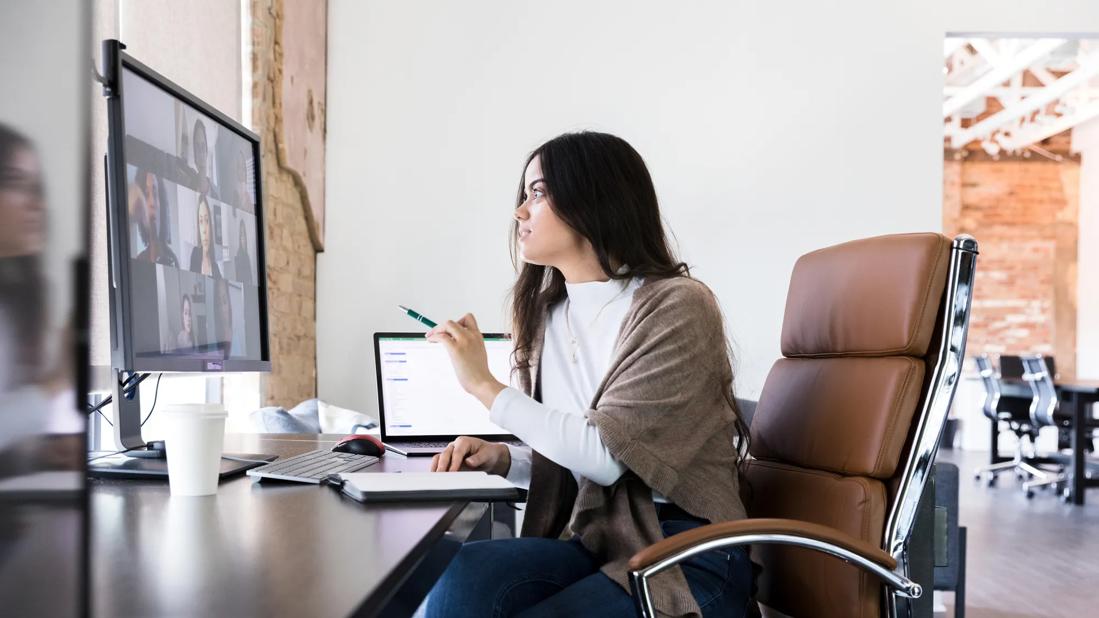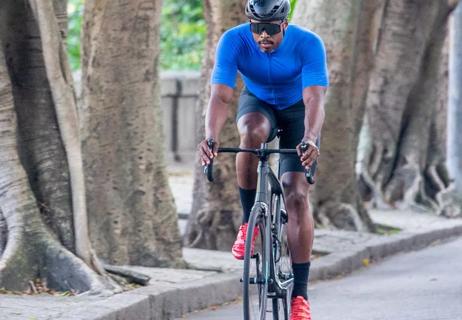Sitting for long hours, like at your desk job, can make your butt sag — among other effects

You can hardly scroll through social media these days without someone popping up on your feed talking about their #OfficeChairButt.
Advertisement
Cleveland Clinic is a non-profit academic medical center. Advertising on our site helps support our mission. We do not endorse non-Cleveland Clinic products or services. Policy
What’s behind the woes? And what can you do to avoid, or remedy, office chair butt?
“Office chair butt” is the name that’s popped up online to describe how too much sitting affects the look of your behind. It’s a popular term that medical pros refer to as atrophy of your gluteal muscle group.
“A lack of conditioning in your gluteus maximus and surrounding tissue leads to weakness, making it build up fat tissue and appear flatter or saggy,” explains occupational therapist Michael Milicia, OT.
In other words, the muscle mass that creates a more rounded behind is a use-it-or-lose-it kind of thing. When it doesn’t get the work it needs, fat settles in on top of the muscle. Because fat tissue is softer and more pliable than muscle, it doesn’t hold its shape as well. And, voila, office chair butt.
People describe office chair butt as looking like your butt is:
It’s no different from the way any muscle in your body can lose its shape when it’s not used regularly. Like upper arms that fall victim to the effects of gravity. Or so-called “turkey neck.”
The term “office chair butt” makes it sound like your chair is to blame for buns that aren’t quite steel. But that’s not the case.
Advertisement
It’s not your chair that’s the trouble. It’s just how much you’re using it.
“Sitting too long without breaks isn’t particularly good for anything,” Milicia points out. “The key is to activate your glutes to offset that sitting as much as possible.”
So, rather than rushing to shell out for a new chair, consider how long you spend sitting. And how you can encourage more movement in your day.
The key to avoiding office chair butt is, quite simply, to get your rear in gear — create more opportunities to exercise your glutes.
More movement will help keep your butt looking more toned. What’s more, it can help counteract other effects of prolonged sitting, namely gluteal amnesia (or the memorably named dead butt syndrome). That leads to things like tightness in your hips, weakness in your lower back, rounding in your shoulders and more.
And over time, a lack of exercise can lead to serious troubles, like heart disease and even certain kinds of cancer.
Milicia shares his recommendations for counteracting office chair butt.
Some jobs require you to be more or less tied to your desk. We get it. But there may be little ways to break up your sitting. Try:
A good rule of thumb? “Try to get up and move every 30 to 90 minutes, as your job allows,” Milicia recommends.
There are ways to activate your lower half even when you’re in your chair. And your coworkers will be none the wiser. Try:
When your workflow allows — or outside of your workday — spending some time dedicated to exercising your glutes can go a long way toward warding off office chair butt and other risks that come with excessive sitting. Some of the best exercises to keep your butt in shape:
Sitting for hours on end — whether at your desk, in the car or on the couch — isn’t your butt’s preferred state. And its effects can go far beyond how bouncy your booty is.
Anything that helps you move more and sit less will help keep you looking and feeling your best.
Advertisement
Learn more about our editorial process.
Advertisement

Stretches, exercises and posture changes can help address lower cross syndrome

Adjust your bike seat, wear breathable clothing and don’t pop or pick!

You may be causing the problem yourself

It can be harder to let go when you’ve invested time, energy and emotions — but it might be the healthier choice long term

Pointing out how their behavior makes you feel and giving them projects to own can help you both

Working beyond your limits can increase illnesses and accidents related to your physical and mental well-being

Help calm the angst that can come with the start of a new work week by adopting a positive mindset, planning an activity and getting some exercise

Taking a stand throughout the day can lower your risk of disease while improving your energy, focus and productivity

Babies can get congested easily, but you can calm their cough by keeping them hydrated, using nasal drops and running a humidifier

Weight loss may cause loose, sagging skin and muscle loss to your rear

Several conditions, like vitiligo and fungal infection, can cause a loss of pigmentation, leading to white spots or patches on your skin